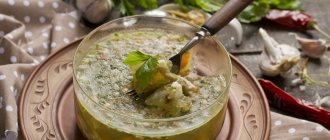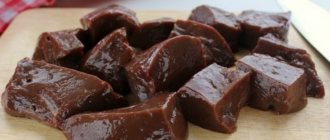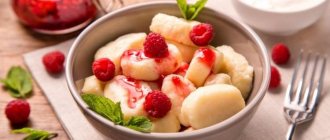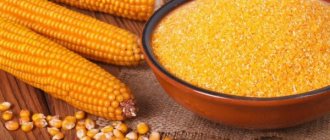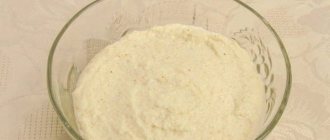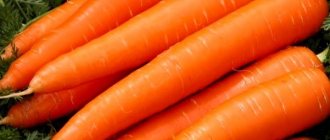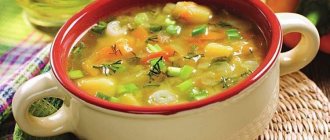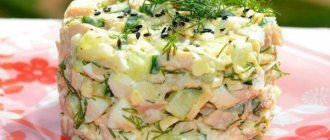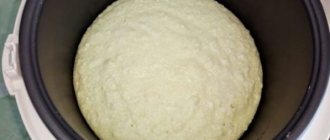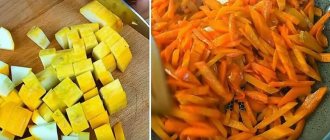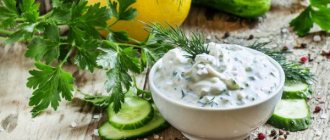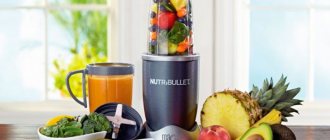Approximately 5% of children suffer from cow's milk allergy. This product contains many ingredients that can potentially cause an allergic reaction, but the most common reaction is to cow protein. During the normal process of digestion, food entering the stomach and then the intestines is broken down into enzymes, which are individually absorbed into the body. A child’s imperfect digestive system is sometimes unable to separate milk into enzymes. This situation creates an allergy to cow protein. It usually affects children aged from birth to one and a half years. And, as a rule, the symptoms of an allergy to cow protein go away on their own when the baby is about five years old. At this time, the functioning of the gastrointestinal tract improves, and it begins to produce the necessary substances to resist hostile elements. But sometimes milk intolerance lasts a lifetime. It should be noted that an allergy to cow protein can be a true allergy or a pseudo-allergy. True implies intolerance by the body of any amount of cow's milk protein. Pseudo-allergy is a condition when an allergic reaction occurs only after the child has “overeaten”, that is, a certain amount of milk enzymes has been digested normally, but the body cannot accept the excess.
Children with allergies to cow protein can be given fermented milk products - kefir, fermented baked milk, yogurt, cottage cheese. The enzymes contained in cow's milk break down into their components during the preparation of the fermented milk product. And the child’s body can try to digest these components. When offering your baby yogurt or cottage cheese, observe his reaction. If symptoms of an allergy to cow protein appear (rash, itching, nausea or vomiting), then the product should be excluded from the diet for now.
General rules
Allergic reactions in children to a particular substance of organic/inorganic origin ( allergen ) are widespread and are a serious problem. Among a wide range of allergens, there are food, household, medicinal, insect, pollen, epidermal, infectious (viral, fungal, parasitic, bacterial). However, in children the leading one is food allergy, in which the immune system develops a reaction to a specific food product/several products that act as an allergen.
As a rule, allergic reactions develop after consuming a product to which the child’s body already has increased sensitivity (sensitization). At the same time, children's allergies can manifest themselves either immediately after consuming a food allergen or after several hours (delayed reaction). Food allergies in children have many manifestations: skin lesions - dryness and weeping, various rashes, itching, redness of the skin. Such clinical symptoms are usually called “diathesis,” in which there is a high risk of its degeneration into atopic dermatitis , urticaria , and Quincke’s edema . These may be disorders of the gastrointestinal tract: regurgitation/vomiting, increased gas formation, intestinal colic, bloating and abdominal pain, constipation /loose stools. Less commonly, in children with food allergies, the respiratory system is affected or combined manifestations of allergies occur.
Allergic reactions occur in children of all ages, starting from the first days of a child’s life. The appearance of food allergies is caused by a number of factors, the main of which are: imperfection of the child’s digestive tract (reduced enzyme ); disturbance of intestinal microflora; increased permeability of the intestinal mucosa; intestinal infections. Also, reactions are often caused by the consumption of highly allergenic foods by the mother during pregnancy , poor nutrition of the mother, early introduction of complementary foods/transfer to artificial feeding with unadapted formulas, and frequent overfeeding of the child. Diet for allergies in children is the most important condition for treatment.
Nutrition for allergies in children from 0 to 3 years old
Infants who are breastfed and allergic to cow's milk proteins require correction of the mother's diet in order to reduce the general state of hyperreactivity of her body. a hypoallergenic diet for the entire period of breastfeeding : it is not recommended to consume foods that have a high allergenic potential - whole milk products, chicken eggs, smoked meats, fish, citrus fruits, seafood, cheese, celery, chocolate, coffee, mushrooms, mustard, nuts , red caviar, spices, sauces, cocoa, canned/pickled foods, carbonated drinks, honey. Very carefully and in small quantities, it is allowed to include red-orange-yellow fruits/vegetables in the diet (tomatoes, beets, red apples, pineapples, strawberries, wild strawberries, carrots, bell peppers, pomegranates, raspberries).
All genetically modified products and those containing food additives (dyes, flavorings, preservatives) are subject to exclusion. The basis of nutrition should be first courses and cereals, dietary poultry (only domestic, since antibiotics and salicylates, food additives are used to raise chickens on poultry farms), fermented milk products, and permitted vegetables. If your baby has an allergic reaction to any product, it must be excluded from the diet.
If a child with manifestations of food allergies is mixed/artificially fed, breast milk is partially replaced with various goat milk-based formulas, adapted milk/fermented milk and soy (hydrolysates) formulas.
Complementary foods for children with allergies are allowed to be given approximately 1 month later than for healthy children (from 7 months), with individual tolerance taken into account. For the first feeding, it is better to use vegetable puree from white cabbage/Brussels sprouts, zucchini, light-colored pumpkin, and other green-colored vegetables. Vegetable purees for baby food are prepared from fresh/frozen vegetables, or you can use special canned baby vegetables. As part of the puree, vegetables must be introduced one by one, 3-5 after the previous ones, gradually bringing them to full volume. You need to start with a monocomponent puree, gradually expanding the range.
Second complementary foods can be introduced from 8-9 months in the form of rice, buckwheat, and corn dairy-free porridges. Porridge is cooked in water. If you prepare the porridge yourself, add a small amount (up to 10 g) of vegetable oil. If industrially produced porridges are used, preference should be given to gluten-free, dairy-free porridges enriched with a complex of vitamins and minerals.
The next complementary food - meat puree (turkey, rabbit, lamb) is allowed to be introduced at 9-10 months. At the same time, it is necessary to monitor the child’s body’s reaction to new varieties of meat. Fruit dishes can be introduced into a child’s diet from 11-12 months, taking into account individual tolerance.
Preference should be given to green apples, and then, controlling stool consistency and skin reaction, pears, bananas, yellow currants, and plums are introduced. In children with an allergy to cow's milk proteins, the duration of dairy-free nutrition can vary from 4 months to one year. The expansion of the diet of such children is carried out by introducing fermented milk products into the diet, which are less allergenic compared to milk. First, kefir is introduced, then milk porridge/cottage cheese under careful monitoring of the child’s condition. Chicken eggs and fish are completely excluded from the children's diet during the first year of life. In the future, it is recommended to replace chicken eggs with quail eggs.
Diet for children with allergies over 3 years old
For children in this age group, when food allergies develop, more stringent restrictions are provided, since their diet is much wider than that of younger children. The daily amount of food/diet must correspond to the indicators of the child’s physical development and age standards. At the same time, foods that cause an allergic reaction (if known) are excluded from the diet - an elimination diet. If the allergen is unknown, to identify it, parents should keep a “food” diary, which carefully reflects the entire diet for the day. Each new product is noted (its quantity, time of administration) and the nature of the reactions to it - redness of the skin, itching, rash, upset stool. The new product is given to the child in the morning, 1-2 teaspoons. If there is no reaction, it is allowed to gradually increase its amount after a day, bringing its volume to the age norm within 3-5 days. If there is a reaction, it is excluded from the child’s diet for a period of time, determined individually by the pediatrician.
For older children, when allergies appear, step-by-step diet therapy is prescribed. The first stage (acute period) - a nonspecific hypoallergenic diet is prescribed for 7-10 days with the exclusion of all potential allergens, while simultaneously conducting an allergological examination of the child to identify the allergen, using the method of identifying allergens in the blood/staging allergy tests. Products containing food additives, as well as dishes that irritate the gastrointestinal mucosa (spicy, fried, pickled, salted, smoked dishes, broths, spices) are excluded.
The consumption of easily digestible carbohydrates, which often increase the manifestations of food allergies, dairy products, flour products, and some cereals is limited. The amount of animal fats decreases while vegetable fats increase, since polyunsaturated fatty acids enhance immunity and help restore damaged skin areas.
At the second stage, the doctor, together with the parents, draws up an individual diet for the child, taking into account the identified allergens, which are excluded from the diet for 3-6 months. At the third stage, as the clinical manifestations of the allergy subside, the diet is gradually expanded, introducing “forbidden” foods/dishes in small quantities (up to 10 grams per day). At the same time, obvious allergenic products are still completely excluded.
Products are introduced one at a time, monitoring the condition of the skin, the child’s well-being, stool and temperature reaction. If the product in increasing doses is not accompanied by allergic reactions, then the next previously prohibited product is introduced. By doing this, you can completely get rid of allergies or achieve a relatively long-term remission, since tolerance to the allergen product gradually increases in most children, and by school age in some of them it may even completely disappear.
In case of food allergies in children, it is important for parents to take into account the peculiarities of culinary processing of products to reduce their allergenicity:
- All products must undergo culinary processing (boiled, steamed, stewed, baked).
- When cooking meat, to completely remove harmful components, it is necessary to boil the meat and drain the broth at least once (preferably twice) before further processing.
- After cutting, it is recommended to soak potatoes in cold water (changing it periodically) for at least 10-12 hours to remove starch and nitrates.
- To remove possible toxic chemicals, cereals are soaked in cold water for 1-2 hours.
- Boiling and baking them reduces the allergenicity of fruits/vegetables.
Hypoallergenic diet for children 5 years old
It is most difficult for preschoolers to adhere to a hypoallergenic diet. They are outside the home more often. They are treated to acquaintances and friends, children attend holidays. Regardless of external circumstances, a hypoallergenic diet for children at home must be strictly followed.
What's added to the menu:
- various dried fruits (prunes, dried apricots, raisins);
- baking, but with careful study of the composition or only from approved products;
- all vegetables to which the child does not have a reaction;
- casseroles, cheesecakes, puddings, jellies and other homemade desserts;
- pork, but choose lean cuts.
A hypoallergenic diet for children 7 years old is no different. Approximately the same menu should be followed by adults. Below is an approximate option for several days. It fully meets the requirements of the child's body.First day Second day The third day Fourth day Fifth day Breakfast Rice porridge with dried apricots Buckwheat Pumpkin porridge with rice Corn porridge with dried fruits Oatmeal with banana Lunch Cottage cheese casserole Baked cheesecakes Cottage cheese with banana Pear, 3 biscuits Cottage cheese with apple Dinner Cauliflower soup with rabbit, pilaf with beef, compote Vermicelli soup, meatballs with mashed potatoes, apple compote Cabbage soup without tomato in beef broth, pasta with minced meat, compote Vegetable soup, meatballs with vermicelli, tea Buckwheat soup with meat and vegetables, vegetable stew, compote Afternoon snack Banana Apple Pear Pumpkin puree Grated carrot and apple salad Dinner Steam cutlets, vegetable puree, fresh cabbage Stewed veal, side dish of any cereal, fresh cucumber Zucchini and meat casserole Meatballs with rice, cabbage salad Stewed turkey or rabbit, mashed potatoes At night you can give milk and fermented milk products (cottage cheese, fermented baked milk, kefir) if there is no reaction to them. If necessary, you can replace it with cucumber or carrots. It is allowed to use meat dishes for the second dinner. It could be a steamed cutlet, a piece of stewed beef or turkey. But under no circumstances should you give raw fruit at night. They can provoke fermentation, flatulence, and abdominal pain.
Authorized Products
The diet for children with allergies includes dietary meats from domestic chicken (without skin), rabbit or turkey in boiled/stewed form.
The first courses are prepared without frying in a weak vegetable broth with the addition of garden herbs (dill, parsley, cilantro).
As a side dish, you can use wheat, buckwheat and oatmeal porridge or boiled potatoes in pieces.
The diet is allowed to include low-fat fresh cottage cheese, yogurt without fruit additives, low-fat fermented milk products, biscuits, whole grain bread, and pasta.
Vegetables you can take include cucumber, lettuce, cabbage, onion, zucchini, and zucchini.
Among fats, preference is given to vegetable oils (sunflower/olive).
As drinks, children are recommended to drink compote/jelly made from permitted berries/fruits, rosehip decoction, and still mineral water.
Table of permitted products
| Proteins, g | Fats, g | Carbohydrates, g | Calories, kcal | |
Vegetables and greens | ||||
| eggplant | 1,2 | 0,1 | 4,5 | 24 |
| zucchini | 0,6 | 0,3 | 4,6 | 24 |
| cabbage | 1,8 | 0,1 | 4,7 | 27 |
| broccoli | 3,0 | 0,4 | 5,2 | 28 |
| Brussels sprouts | 4,8 | 0,0 | 8,0 | 43 |
| cauliflower | 2,5 | 0,3 | 5,4 | 30 |
| green onion | 1,3 | 0,0 | 4,6 | 19 |
| bulb onions | 1,4 | 0,0 | 10,4 | 41 |
| cucumbers | 0,8 | 0,1 | 2,8 | 15 |
| squash | 0,6 | 0,1 | 4,3 | 19 |
| parsley | 3,7 | 0,4 | 7,6 | 47 |
| salad | 1,2 | 0,3 | 1,3 | 12 |
| celery | 0,9 | 0,1 | 2,1 | 12 |
| asparagus | 1,9 | 0,1 | 3,1 | 20 |
| Jerusalem artichoke | 2,1 | 0,1 | 12,8 | 61 |
| dill | 2,5 | 0,5 | 6,3 | 38 |
| beans | 7,8 | 0,5 | 21,5 | 123 |
| garlic | 6,5 | 0,5 | 29,9 | 143 |
| lentils | 24,0 | 1,5 | 42,7 | 284 |
Fruits | ||||
| pears | 0,4 | 0,3 | 10,9 | 42 |
| nectarine | 0,9 | 0,2 | 11,8 | 48 |
| peaches | 0,9 | 0,1 | 11,3 | 46 |
| apples | 0,4 | 0,4 | 9,8 | 47 |
Berries | ||||
| gooseberry | 0,7 | 0,2 | 12,0 | 43 |
| black currant | 1,0 | 0,4 | 7,3 | 44 |
Nuts and dried fruits | ||||
| flax seeds | 18,3 | 42,2 | 28,9 | 534 |
| sunflower seeds | 20,7 | 52,9 | 3,4 | 578 |
Cereals and porridges | ||||
| buckwheat (kernel) | 12,6 | 3,3 | 62,1 | 313 |
| semolina | 10,3 | 1,0 | 73,3 | 328 |
| oat groats | 12,3 | 6,1 | 59,5 | 342 |
| cereals | 11,9 | 7,2 | 69,3 | 366 |
| wheat bran | 15,1 | 3,8 | 53,6 | 296 |
Flour and pasta | ||||
| pasta | 10,4 | 1,1 | 69,7 | 337 |
Dairy | ||||
| dairy products | 3,2 | 6,5 | 4,1 | 117 |
| kefir 0% | 3,0 | 0,1 | 3,8 | 30 |
| kefir 1% | 2,8 | 1,0 | 4,0 | 40 |
Cheeses and cottage cheese | ||||
| cottage cheese 0.6% (low fat) | 18,0 | 0,6 | 1,8 | 88 |
| curd tofu | 8,1 | 4,2 | 0,6 | 73 |
Meat products | ||||
| boiled beef | 25,8 | 16,8 | 0,0 | 254 |
| beef stew | 16,8 | 18,3 | 0,0 | 232 |
Bird | ||||
| boiled chicken | 25,2 | 7,4 | 0,0 | 170 |
| steamed chicken breast | 23,6 | 1,9 | 0,0 | 113 |
| boiled turkey fillet | 25,0 | 1,0 | — | 130 |
Fish and seafood | ||||
| seaweed | 0,8 | 5,1 | 0,0 | 49 |
Oils and fats | ||||
| butter | 0,5 | 82,5 | 0,8 | 748 |
| linseed oil | 0,0 | 99,8 | 0,0 | 898 |
| olive oil | 0,0 | 99,8 | 0,0 | 898 |
| sunflower oil | 0,0 | 99,9 | 0,0 | 899 |
Non-alcoholic drinks | ||||
| mineral water | 0,0 | 0,0 | 0,0 | — |
| instant chicory | 0,1 | 0,0 | 2,8 | 11 |
| green tea | 0,0 | 0,0 | 0,0 | — |
Juices and compotes | ||||
| rose hip juice | 0,1 | 0,0 | 17,6 | 70 |
| * data is per 100 g of product | ||||
Sweets for allergy sufferers
If your child suffers from allergies, this is not a reason to completely deny him sweets. Many delicious treats today can be easily replaced with healthier foods. As an alternative, for guys who love chocolate but suffer from milk allergies, you can offer a bitters bar with a high cocoa content or nougat. This product does not contain milk.
A child over one year old can be pleased with marshmallows, marshmallows, and waffles with fruit filling. They contain pectin . This element is beneficial for the body, as it improves the functioning of the gastrointestinal tract. When purchasing such treats, you should carefully read the ingredients: it should not contain dyes, chocolate, or flavorings. The following food additives pose a great danger to children:
- E 321 or butylated hydroxytoluene is a popular antioxidant;
- E 220-27 – sulfates;
- E 249-52 – nitrates;
- E210-19 – benzoic acid derivatives;
- E 200-203 – sorbic acid;
- E 122, 102, 110, 124, 127, 151 – dyes;
- B 550-553 – flavorings;
- E 621-25 – glutamates of sodium, potassium, calcium, magnesium.
You can find a good substitute for confectionery products with food additives: dried fruits, homemade ice cream or marmalade, gluten-free baked goods, gingerbread cookies . Many kids will happily eat frozen juice made from natural fruits and sweet popcorn. Do not offer your baby tartlets, store-bought muffins and other rich baked goods with a high content of egg whites and margarine. Choose cookies that are not too sweet and low in fat:
- oatmeal;
- cracker;
- biscuits.
If you want to treat your baby to candy, you should give preference to milk-based sweets without chocolate: Toffee, Korovka, School. Store-bought candy bars like Snickers and Twix can easily be replaced with pressed muesli and a vitamin treat from the pharmacy - Hematogen. If your child is not allergic to honey and nuts, you can include halva in your diet.
Fully or partially limited products
The diet for children with allergies involves the exclusion of products such as meat/fish/mushroom broths and dishes based on them. It is not allowed to consume waterfowl meat, fatty red meats, smoked meats, milk, sausages, chicken eggs, “red” fish and caviar of all types, citrus fruits, chocolate, sweets and flour products, seafood (shrimp, mussels, squid), sour cream, all salted and pickled foods, canned food, cream, sweet curds, cooking/animal fats, salty and fatty cheeses.
Excluded from the diet: sugar, jam, honey, confectionery, ice cream, sweets, jams. White rice, pasta, and semolina are subject to restrictions.
All seasonings (vinegar, ketchup, mayonnaise, mustard, horseradish), mushrooms, pineapple, eggplant, melon, butter dough and fruits/vegetables of red and orange color (red apples, tangerines, beets, tomatoes, oranges, strawberries, strawberries) are excluded from the diet , radish, carrots, radishes), nuts (hazelnuts).
The diet menu should not include foods that contain dyes and preservatives, fruit tea, fruit/vegetable juices from red/yellow berries, coffee, or sweet carbonated drinks.
Table of prohibited products
| Proteins, g | Fats, g | Carbohydrates, g | Calories, kcal | |
Vegetables and greens | ||||
| carrot | 1,3 | 0,1 | 6,9 | 32 |
| salad pepper | 1,3 | 0,0 | 5,3 | 27 |
| tomatoes | 0,6 | 0,2 | 4,2 | 20 |
Fruits | ||||
| oranges | 0,9 | 0,2 | 8,1 | 36 |
| bananas | 1,5 | 0,2 | 21,8 | 95 |
| pomegranate | 0,9 | 0,0 | 13,9 | 52 |
| grapefruit | 0,7 | 0,2 | 6,5 | 29 |
| lemons | 0,9 | 0,1 | 3,0 | 16 |
| mango | 0,5 | 0,3 | 11,5 | 67 |
| tangerines | 0,8 | 0,2 | 7,5 | 33 |
Berries | ||||
| grape | 0,6 | 0,2 | 16,8 | 65 |
| Red currants | 0,6 | 0,2 | 7,7 | 43 |
Nuts and dried fruits | ||||
| nuts | 15,0 | 40,0 | 20,0 | 500 |
| raisin | 2,9 | 0,6 | 66,0 | 264 |
Cereals and porridges | ||||
| white rice | 6,7 | 0,7 | 78,9 | 344 |
Confectionery | ||||
| jam | 0,3 | 0,2 | 63,0 | 263 |
| jam | 0,3 | 0,1 | 56,0 | 238 |
| candies | 4,3 | 19,8 | 67,5 | 453 |
| pastry cream | 0,2 | 26,0 | 16,5 | 300 |
Ice cream | ||||
| ice cream | 3,7 | 6,9 | 22,1 | 189 |
Cakes | ||||
| cake | 4,4 | 23,4 | 45,2 | 407 |
Chocolate | ||||
| chocolate | 5,4 | 35,3 | 56,5 | 544 |
Raw materials and seasonings | ||||
| mustard | 5,7 | 6,4 | 22,0 | 162 |
| ketchup | 1,8 | 1,0 | 22,2 | 93 |
| mayonnaise | 2,4 | 67,0 | 3,9 | 627 |
| honey | 0,8 | 0,0 | 81,5 | 329 |
| vinegar | 0,0 | 0,0 | 5,0 | 20 |
Dairy | ||||
| condensed milk | 7,2 | 8,5 | 56,0 | 320 |
| cream | 2,8 | 20,0 | 3,7 | 205 |
| sour cream 30% | 2,4 | 30,0 | 3,1 | 294 |
| sour cream 40% (fat) | 2,4 | 40,0 | 2,6 | 381 |
Cheeses and cottage cheese | ||||
| cheese | 24,1 | 29,5 | 0,3 | 363 |
| dor blue cheese | 21,0 | 30,0 | 0,0 | 354 |
| blue cheese | 17,6 | 31,0 | 1,8 | 363 |
| amber processed cheese | 7,0 | 27,3 | 4,0 | 289 |
| cottage cheese 18% (fat) | 14,0 | 18,0 | 2,8 | 232 |
Meat products | ||||
| pork | 16,0 | 21,6 | 0,0 | 259 |
| pork fat | 1,4 | 92,8 | 0,0 | 841 |
| salo | 2,4 | 89,0 | 0,0 | 797 |
| mutton | 15,6 | 16,3 | 0,0 | 209 |
Sausages | ||||
| smoked sausage | 16,2 | 44,6 | 0,0 | 466 |
| smoked sausage | 9,9 | 63,2 | 0,3 | 608 |
| sausages | 10,1 | 31,6 | 1,9 | 332 |
| sausages | 12,3 | 25,3 | 0,0 | 277 |
Bird | ||||
| smoked chicken | 27,5 | 8,2 | 0,0 | 184 |
| duck | 16,5 | 61,2 | 0,0 | 346 |
| smoked duck | 19,0 | 28,4 | 0,0 | 337 |
| goose | 16,1 | 33,3 | 0,0 | 364 |
Eggs | ||||
| chicken eggs | 12,7 | 10,9 | 0,7 | 157 |
Fish and seafood | ||||
| fried fish | 19,5 | 11,7 | 6,2 | 206 |
| smoked fish | 26,8 | 9,9 | 0,0 | 196 |
| salted fish | 19,2 | 2,0 | 0,0 | 190 |
| Red caviar | 32,0 | 15,0 | 0,0 | 263 |
| black caviar | 28,0 | 9,7 | 0,0 | 203 |
| canned fish | 17,5 | 2,0 | 0,0 | 88 |
| semi-finished fish products | 12,5 | 6,7 | 14,7 | 209 |
| sardine | 20,6 | 9,6 | — | 169 |
| mackerel | 18,0 | 13,2 | 0,0 | 191 |
| cod (liver in oil) | 4,2 | 65,7 | 1,2 | 613 |
Oils and fats | ||||
| creamy margarine | 0,5 | 82,0 | 0,0 | 745 |
| coconut oil | 0,0 | 99,9 | 0,0 | 899 |
| palm oil | 0,0 | 99,9 | 0,0 | 899 |
| rendered beef fat | 0,0 | 99,7 | 0,0 | 897 |
| cooking fat | 0,0 | 99,7 | 0,0 | 897 |
| rendered pork fat | 0,0 | 99,6 | 0,0 | 896 |
Alcoholic drinks | ||||
| vodka | 0,0 | 0,0 | 0,1 | 235 |
Non-alcoholic drinks | ||||
| cola | 0,0 | 0,0 | 10,4 | 42 |
| black coffee | 0,2 | 0,0 | 0,3 | 2 |
| Pepsi | 0,0 | 0,0 | 8,7 | 38 |
| sprite | 0,1 | 0,0 | 7,0 | 29 |
| tonic | 0,0 | 0,0 | 8,3 | 34 |
| energy drink | 0,0 | 0,0 | 11,3 | 45 |
Juices and compotes | ||||
| cranberry jelly | 0,0 | 0,0 | 13,0 | 53 |
| * data is per 100 g of product | ||||
Reviews and results
A diet for allergies in children, according to reviews from parents, can significantly minimize the severity of clinical manifestations in the acute period of the disease and prolong remission in the chronic course.
- “... The child has a burdened allergic history since birth. Since then, we have been frequent guests of the allergist. The child cannot tolerate chicken protein at all. The reaction is immediate—the skin breaks out in a rash, turns red, and itches. That's why we go on a diet all the time. The tricky part is eliminating all products that use eggs because the manufacturer doesn't always list all the ingredients completely on the label. Therefore, we try to prepare everything for him ourselves. We undergo examination every year. The doctor consoles us that in many children, allergies go away or decrease with age. We really hope so”;
- “... After the introduction of new complementary foods, the child developed severe diathesis. They called a doctor who stopped complementary feeding and prescribed a hypoallergenic diet for me during breastfeeding and advised me on how to properly start new complementary foods and which formulas are best to use.”
Hypoallergenic diet for children 2 years old
At the age of two years, the issue of complementary feeding is completely resolved. Therefore, a hypoallergenic diet for children is aimed specifically at therapeutic nutrition. But when introducing any new product, it is also recommended to be gradual and fractional. If a minor reaction occurs, food is excluded.
What is added to the hypoallergenic diet for children 2 years old:
- new vegetables, fruits, berries (apricot, peach, red currant, bell pepper);
- baked dishes (casseroles, cheesecakes from the oven, homemade biscuits, cookies, if there is no reaction to wheat);
- broth-based soups;
- You can add corn, peas, chickpeas.
It is at this age that the transition to the adult table occurs. But don’t get carried away with fried, stewed dishes with lots of sauces and spices. The easier the food is to digest, the better for the child.
Hypoallergenic diet for children 2 years old (menu)
As the list of permitted products increases, the children's menu becomes more diverse. The child can be seated at a common table. Kindergarten nutrition may be suitable for him, but with minor adjustments.
How to eat a hypoallergenic diet for children 2 years old (menu):
- Breakfast: porridge, tea.
- Second breakfast: cottage cheese, any allowed fruit.
- Lunch: soup with vegetables and meatballs, can be prepared in light broth, compote.
- Afternoon snack: cottage cheese casserole, optionally with added fruit, juice or compote.
- Dinner: stewed meat with vegetables.
- Second dinner: any fermented milk product.
